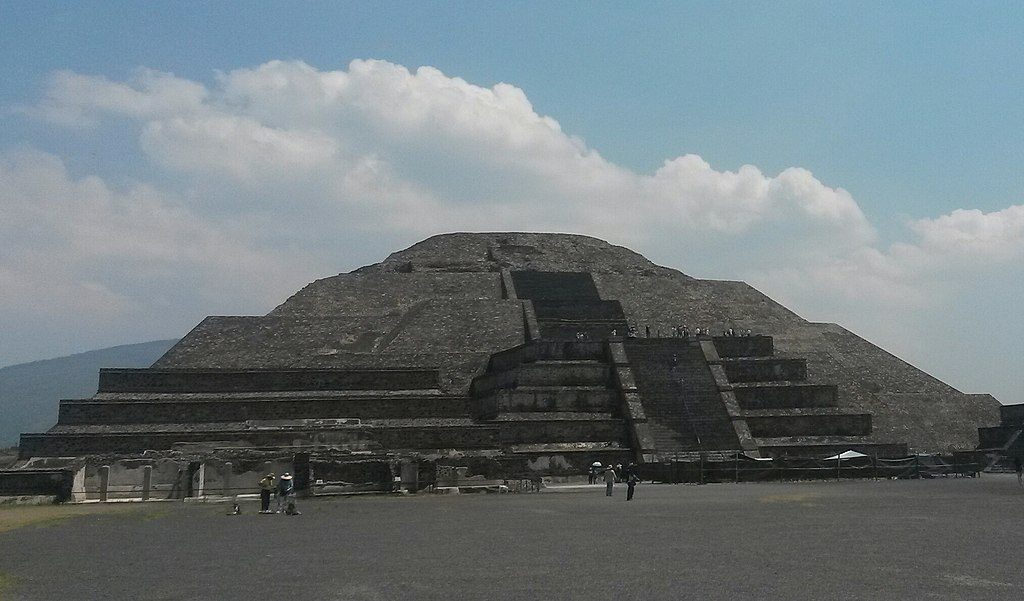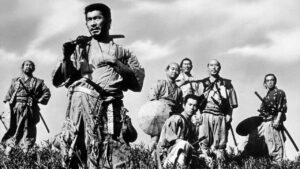At the heart of the mighty Aztec empire laid the capital Tenochtitlan, the Venice of the new world. No other civilization at the time could hope to compare to the city’s impressive pyramids, glamorous temples, and advanced aqueducts. At one point in history, Tenochtitlan was so populous that it contained around 200,000 inhabitants. But Tenochtitlan wasn’t always such a powerful urban site. When the Aztecs were immigrants looking for a new home, they were captivated by a mysterious ancient city. To this day, no one really knows who built it or what happened to its inhabitants. But to the Aztecs, they believed that out of this city emerged the whole of human society and order. This once glorious city was known as Teotihuacán.

There is only a minuscule amount of knowledge about Teotihuacán because a sufficient written record of the city does not exist. In fact, no one knows what the people of Teotihuacán called themselves or what the actual name of the city was. Indeed, it wasn’t until much later that the Aztecs named it Teotihuacán, which means “city of the gods.”1 To an extent, the Aztecs were not exaggerating, because Teotihuacán was once an electrifying center for religion, trade, and culture. At one point, the city contained over 2,000 apartment buildings, 600 pyramids, around 500 workshops, and countless temples, plazas, and palaces.2 But how, exactly, did Teotihuacán become such a powerful metropolis? Once again, let us look at what the Aztecs themselves have to say about it.
According to an Aztec legend, the world was created and destroyed four times before the creation of our current world. Each time the world was destroyed, the sun quickly perished alongside it, and a new sun, presided by a god, was required to create another world.3 The first world was under the dominion of Tezcatlipoca–the god of the night. During his era as the sun, there were no humans, but rather a race of vegetarian giants that roamed the Earth. Tezcatlipoca’s reign lasted for 676 years, but it was cut short when Quetzalcoatl, the god of the wind, grew displeased as he saw the other deity ruling above the land. So he used his staff to knock down Tezcatlipoca into the seas at the farthest corners of the earth. Angered by this, Tezcatlipoca gathered his strength and emerged from the water as a powerful jaguar, running through the Mesoamerican plains and mountains. Soon, many jaguars appeared alongside him, and they eventually hunted and killed every giant on Earth–thus bringing an end to the first world.4
Quetzalcoatl then presided over the second world and, under his rule, human-like beings began to appear. His reign was only 364 years long, however, for Tezcatlipoca wanted revenge on his cosmic rival. Using his dark powers to overwhelm the wind god, he launched a massive hurricane that swept away the sun and the people. Darkness then covered the world and the survivors hid in the trees, eventually turning into monkeys.5

Tlaloc, the rain god, found opportunity in the darkness, and quickly took charge over the new third world. Much to Tlaloc’s dismay, Quetzalcoatl was displeased with his rule, and he sent a rain of fire that again destroyed the sun and earth. The survivors who hid from the fire became the ancestors of the dogs, turkeys, and butterflies of today. The goddess of the lakes and oceans, known as Chalchiúhtlicue, then presided over the fourth sun and world. Although her reign lasted much longer than the previous two, tragedy was no stranger to the gods. Although no one knows exactly how the fourth world ended, Aztec accounts seem to tell the story of a great flood covering the Earth, turning the inhabitants of that world into fish, whales, and other creatures of the deep ocean.6
After some time, all the gods gathered at Teotihuacán. The earth was filled with darkness and a new sun was needed. The gods also decided that a moon should provide light when the sun did not. The rich god Tecuciztécatl proudly stepped forth to be the new sun. But a small, humbler god, Nanahuatzin also volunteered. After agreeing to share the Earth, the two made preparations to renew the world.7 For four days, Tecuciztécatl and Nanahuatzin prayed and fasted.8 When they finished, the other gods lit a great fire on the hard earth of Teotihuacán. In his lavish robes, Tecuciztécatl threw valuable quetzal feathers, stone flints, and incense into the fire as sacrifices. Nanahuatzin, having no riches to sacrifice, humbly offered weeds drenched in his own blood. The two slowly then approached the menacing flames of the fire. Tecuciztécatl intended to go first but he was ultimately driven back by the heat of the inferno. He approached it again for the second time… the third… the fourth. No matter what he did, the rich god was being held back by his fear. Then Nanahuatzin stepped forward. With his eyes closed and mind stilled, Nanahuatzin leapt into the great fire. Having been awestruck by his rival, Tecuciztécatl quickly rushed into the flames. Nanahuatzin then became the new sun, while Tecuciztécatl became the moon.9

The gods then waited for the new world to develop. However, after a while, the gods noticed that nothing was happening. Why wasn’t the new sun in motion? Why hadn’t the world been fully restored? After a discussion with Nanahuatzin, the rest of the gods then threw themselves into the fire, one by one, to restart the world. After all the gods sacrificed themselves, the age of the fifth sun began, and the world was now in motion. It was then, that out of Teotihuacán human society was born. The city flourished under the leaders and priests of Teotihuacán and it is said that after their deaths the pyramids of the sun and moon were built by giants.10
Though we may never know how this city actually came to be, it is no mystery that Teotihuacán was once a revered city in Mesoamerica. To this day, many visit the ruins of Teotihuacán and observe its sites, such as the “Avenue of the Dead,” a two-mile road that connects the Pyramid of the Moon to a large market. Other wonders include the towering Pyramid of the Sun, which was once a revered ritual site because it was built over a cave that many once believed was the place where humans emerged into the world.11 Some of the palaces and temples still stand today, such as the famed temple of Quetzalcoatl. While Teotihuacán may have a murky history, its name continues to stand against the sands of time, eternally offering its mysterious beauty to curious observers everywhere who yearn to learn more of humanity’s past.
- Early Civilizations in the Americas Reference Library, 2005, s.v. “Teotihuacán,” by Sonia G. Benson. ↵
- Charles Phillips, Aztec and Maya: The Complete Illustrated History: The Greatest Civilizations of Ancient Central America with 1000 Photographs, Paintings and Maps (New York: Metro Books, 2008), 55. ↵
- Early Civilizations in the Americas Reference Library, 2005, s.v. “Teotihuacán,” by Sonia G. Benson. ↵
- Charles Phillips, Aztec and Maya: The Complete Illustrated History: The Greatest Civilizations of Ancient Central America with 1000 Photographs, Paintings and Maps (New York: Metro Books, 2008), 160. ↵
- Charles Phillips, Aztec and Maya: The Complete Illustrated History: The Greatest Civilizations of Ancient Central America with 1000 Photographs, Paintings and Maps (New York: Metro Books, 2008), 160. ↵
- Charles Phillips, Aztec and Maya: The Complete Illustrated History: The Greatest Civilizations of Ancient Central America with 1000 Photographs, Paintings and Maps (New York: Metro Books, 2008), 161. ↵
- Charles Phillips, Aztec and Maya: The Complete Illustrated History: The Greatest Civilizations of Ancient Central America with 1000 Photographs, Paintings and Maps (New York: Metro Books, 2008), 161. ↵
- Early Civilizations in the Americas Reference Library, 2005, s.v. “Teotihuacán,” by Sonia G. Benson. ↵
- Charles Phillips, Aztec and Maya: The Complete Illustrated History: The Greatest Civilizations of Ancient Central America with 1000 Photographs, Paintings and Maps (New York: Metro Books, 2008), 162. ↵
- Early Civilizations in the Americas Reference Library, 2005, s.v. “Teotihuacán,” by Sonia G. Benson. ↵
- World History Encyclopedia, 2011, s.v. “The Teotihuacan Empire, 300–650 CE,” by Alfred J. Andrea. ↵




102 comments
Eliezer Leal
I always love learning about the about the past especially about diverse cultures. The Aztecs have many stories of how the world came to be or how the world might end and it is always interesting to when I hear these different stories. I love hearing the stories and the myths the Aztecs have of how the world as they know it came to be. The many mysteries of left unanswered such as how Teotihuacan came to be is even more interesting because no one has the true answer as to who built it or what became of the people Teotihuacan.
Briley Perkins
I have heard of the city Teotihuacán many times before, majority of the time being in a history class that talked about ancient history. Although I have heard of the city, I have never heard of it being told the way the author wrote it. It is amazing to see so many different cultures tell “their side” of story of how the world was created. I hope maybe one day I can visit Teotihuacán to see its beautiful structure and admire what could have happened on that site.
Mitchell Yocham
It’s hard to believe since I am Catholic that these civilizations existed where they believed that giants built these pyramids, but because there are so many different beliefs, anything could be possible because the size of those pyramids and buildings were ginormous. It’s also hard to believe that the people living there were advanced to build such civilized buildings because they didn’t have the technology we have today.
Eloy Cruz
I have been to Teotihuacan myself and it is the one of the most astonishing ancient cities that I have encountered because of the time that it was built and the size of the massive pyramids. The architecture isn’t comparable to anything at all. One of the questions that I ask myself is, how exactly did the Aztecs manage to get so advanced into these types of architecture and be so good at it? I also didn’t know the story of the Aztec gods gathering in Teotihuacan. Very good read!
Carlos Tami
This is a very common city to be researched and talked out, but I have never heard this version. I’ll have to admit that the world being destroyed four times before creating the current world is mind blowing. Of course, this is a very ambiguous theory. But for some reason I can’t help but want to believe them. It’s kind of like accepting that different civilizations have different theories but there are some reoccurring patterns in their theories meaning there must be some truth to it. It was very interesting seeing how the worlds ending different times created organisms that we have today. Also the people hiding in trees became monkeys jumped out at me in the sense that it partially agrees with the modern theory of evolution. This is a very interesting topic, thank you for composing this for all of us to be in awe.
Judy Reyes
I enjoyed this article as well as the pictures. It was really fascinating to learn about the city of Tenochtitlan. What was most interesting to me is the fact that no one really knows much about the city. They know neither who built it nor who its inhabitants were. What is also fascinating is the Aztec’s thoughts on what actually happened.
Edith Santos Sevilla
This article is very descriptive and it tells a story that is not often shown here in the U.S. I enjoyed reading about the different gods and what the legend about the creation of the city and the different gods the Aztecs had. Even though some of the names are hard to identify and pronounce they are really interesting. The legend about the the different gods and how during each era there was different creations of animals and plants. The most interesting one was the fourth one about how the sun didn’t move at first until the creation of the moon and how it was that both created a functional earth after the sacrifice of the other gods.
Bruno Lezama
It’s the first time that I heard about this legend. It’s interesting how Aztec people made this epic legend in order to explain the origin of their capital, Tenochtitlan. I didn’t know that Aztecs had a lot of gods lo explain the origin of the things. They had a lot of imagination to created that number of gods. I hope travel to Tenochtitlan one day because it seems as a really cool place to visit.
Nicole Ortiz
I remember reading a story of Teotihuacán in one of my Spanish classes during high school and this article actually told me a different story than the one that I had previously read about which was really interesting! It’s so fascinating to see how the Aztecs, Greeks, Romans, etc. told stories of their creations and how their world came to be. It was a nice article and really interesting to see how the Aztecs believed that this famous city was built.
Angely Noriega Baron
As I was reading through the article, I was impressed by the number of inhabitants Tenochtitlan contained. I am also questioning how no one knows what the name of the city was called. I understand that the Aztecs ended up coming up with a name later on but it would have been satisfying to know the actual name of the city. I always hear people speak about the marvelous Tenochtitlan, especially those who have seen it for themselves and it makes me want to go and see it someday.